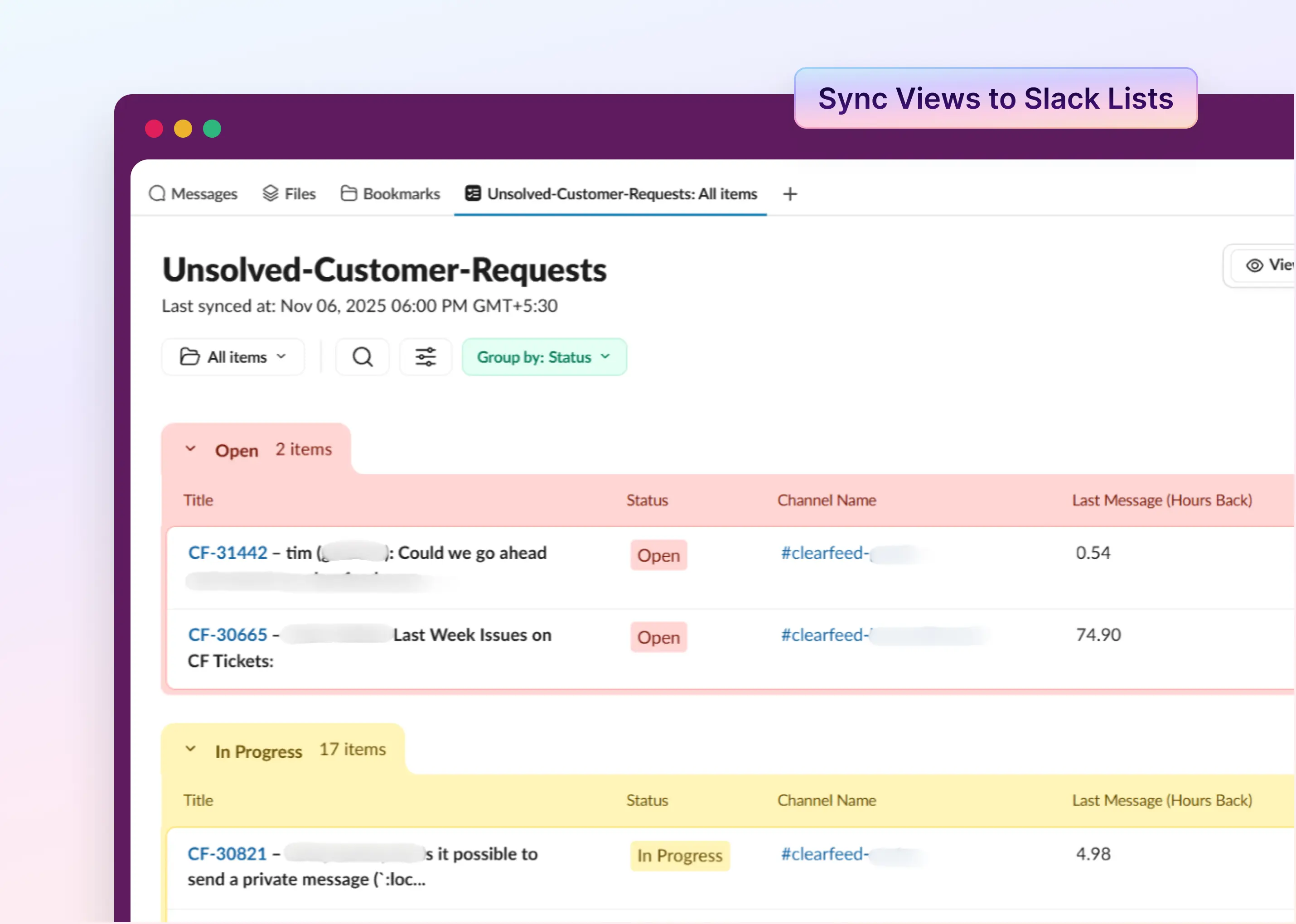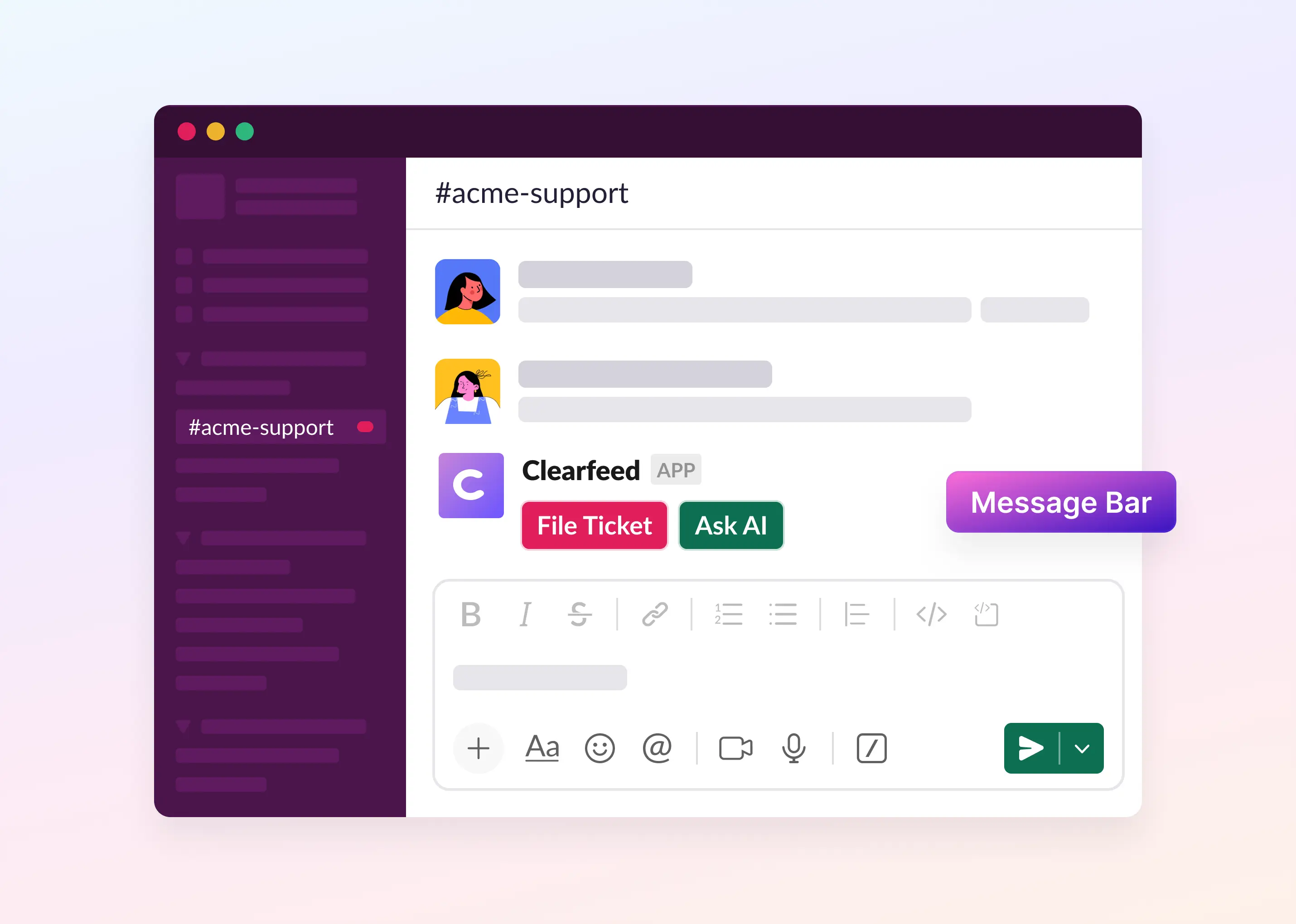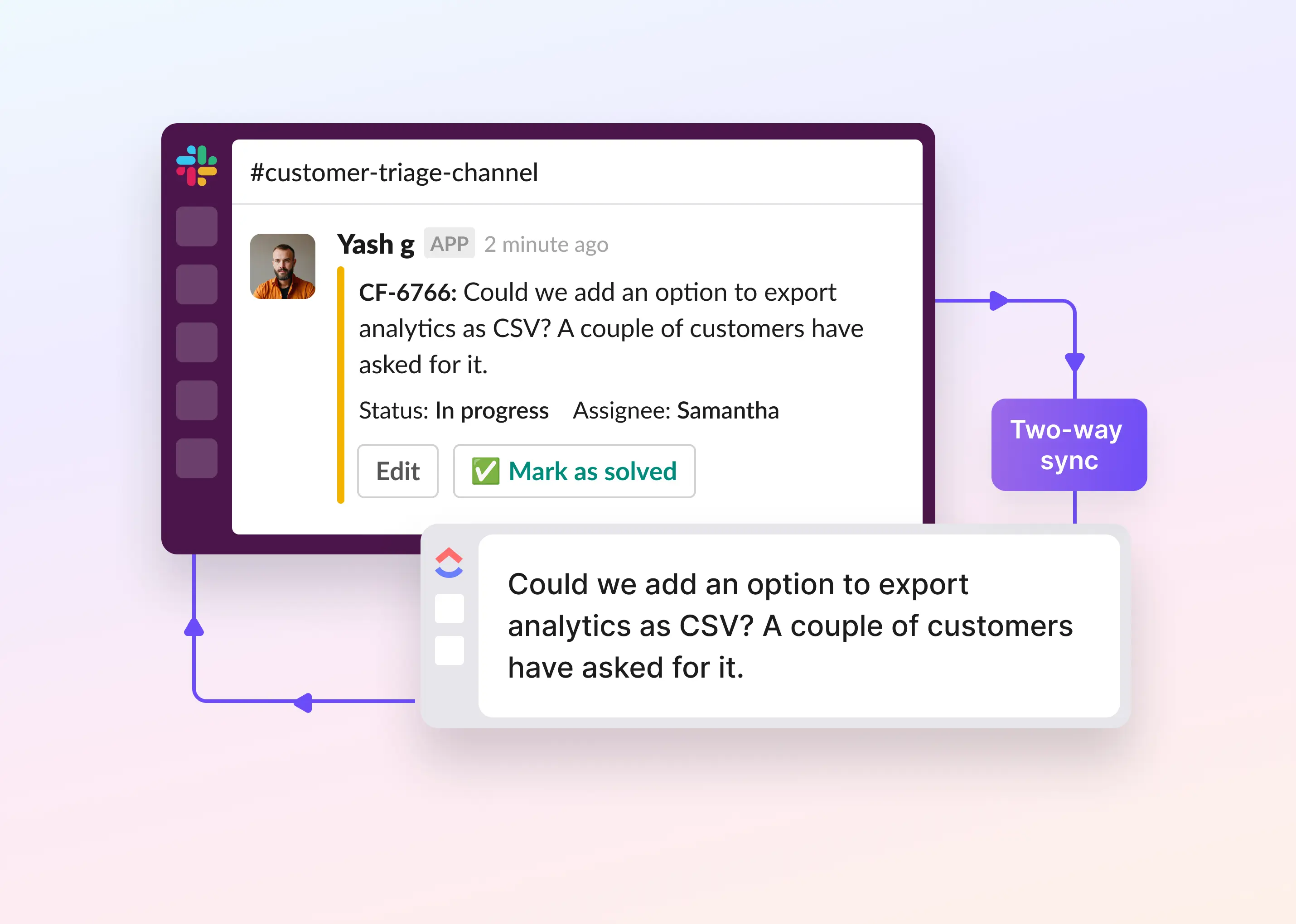ClearFeed helps teams manage customer and employee requests effectively within Slack primarily through structured Ticketing. But there are many conversations where tickets don't suffice. Some require long-running follow-ups, internal approvals, or coordination with other teams. These are better managed as Tasks in task and project management systems.
To bridge this gap, we’re excited to introduce Tasks in ClearFeed. You can now turn any ClearFeed Request or Ticket to a Task in your team’s task management system directly from Slack - by just adding an emoji or from the Slack Triage channel. The Task stays linked to the original ticket (and to Slack threads related to the Ticket), so context is preserved and updates flow both ways.
ClearFeed integrates with major task management systems - including Jira, GitHub, ClickUp, Linear, and Asana - so you can file Tasks where your teams already work, without duplicating effort or losing visibility.
Let’s take a look at how it works and where it fits in your workflow.
How it Works
ClearFeed’s Task Management seamlessly transforms Slack conversations into structured Tasks within your preferred task management system. Here’s how it works:
Step 1: Manual Task Creation Trigger from Slack
When a user reacts to a message in the Request Channel in Slack with a configured emoji, ClearFeed recognizes the need for escalation and initiates Task creation in the linked external system like Jira, Linear, ClickUp, etc. Users can also file the Task from Triage channels using "File a Task" action (available as "File a Jira", "File a Github issue" etc.)
Check out the step-by-step guide to configure emoji-based Task creation in ClearFeed.
Step 2: AI-assisted Task Filing
Once the user triggers Task creation, ClearFeed automatically compiles the request details including message content, requester information, and relevant metadata and forwards them to the selected task management system to create the corresponding Task. GPT models are used (if AI options are enabled) to compute a summary of the task and fill in fields like Title and Description that are required by all task management systems.
Step 3: Task Updates Added as comments in Tickets & Threads
Once the Task is created, ClearFeed adds the external Task ID and it's URL as a comment in the Ticket. The comment is posted publicly or privately based on how the task was created (and also what options were selected when creating the task. Similarly task updates (comments and status updates) flow back into the Ticket in the same privacy mode. The end result is that support personnel (and end customers optionally) are kept upto date on the Task progress.
Note: comments in the ticket are also continually relayed to the Task - thereby providing visibility to upstream teams on customer communications.
What the Task Lifecycle Looks Like in ClearFeed
Once a Task is filed, it continues to stay connected to the original request (or ticket) and evolves alongside the conversation. Here’s a quick look at how Tasks flow through ClearFeed from request to resolution.
1. Request is Raised in Slack
A customer or teammate raises an issue in a Slack channel monitored by ClearFeed. This becomes a ClearFeed Request. Requests raised via Emails, private Slack messages or WebChat are automatically treated as Tickets (ie. - a ticket id is made available to the customer)
2. Choose How to Track It
Based on the desired workflow, the request can be:
- Optionally Turned into a Ticket. This gives requesters an ID they can refer to for their issue. ClearFeed supports creating Tickets in ClearFeed itself -or in external ticket management systems like Zendesk, JSM, Freshdesk, Intercom, Hubspot and Salesforce.
- And/Or Converted into a Task (for work that requires long-running follow-ups in tools like GitHub, Linear, Jira, ClickUp, or Asana).

When requests are filed and linked to external Tasks - ClearFeed continues to track service metrics (like first response, response and closure times). Comments made in the Task management system are not treated as responses. (This is an important difference between external tasks vs. external tickets).
3. Populate the Task from Slack
Using an emoji or “More actions,” a responder can file a Task directly from the thread. A form is shown to capture relevant fields (project, assignee, labels, etc.). Once created, a link to the external Task is posted back in the Slack thread (privately if filed from Triage channel, publicly if filed from the request channel).

4. Collaborate in Triage Channel
If the team uses Slack Triage Channels, internal discussions and async coordination can continue in parallel without cluttering the customer-facing thread.
5. Track Progress & Stay Synced
Any updates made to the Task in the external system (e.g., change in status, comments) are synced back to the original Slack thread, so the requester stays in the loop.

This flow ensures every message gets routed to the right destination, whether it’s a ticket, a Task, or internal conversation, and everything stays connected in Slack.
Common Use Cases
Here are some practical ways teams are using Task Management in ClearFeed:
- Turn customer issues into feature requests: Support and Success teams often receive recurring product feedback in customer conversations. These can now be quickly converted into Tasks in tools like Jira or Linear, ensuring the Product team has visibility and can prioritize them in upcoming sprints.
- File bugs from internal team messages: Internal teams like sales or ops often report bugs in Slack channels. Instead of forwarding messages manually, these can be filed as structured bug reports in engineering systems with a single emoji reaction.
- Create Tasks for marketing or project teams: Need help from the content or website team? Convert a Slack message into a ClickUp or Asana Task and assign it directly and eliminate follow ups over multiple threads.
- Assign Tasks to managers for approvals: Some requests require approvals before moving forward - budget sign-offs, exception handling, or process changes. These can be filed as Tasks assigned to the right manager for review.
- Website or design changes: File a ticket for a website update, and from there, create a Task for the design team to pick up mockups or assets keeping both teams in sync through linked workflows.
Coming Soon
We’re also working on deeper task-ticket dependencies in ClearFeed.
Soon, you’ll be able to mark a request as “Blocked” on one or more Tasks ensuring tighter alignment between tickets and long-running work. If a request has associated Tasks marked as blockers, it cannot be closed or resolved until those Tasks are completed.
Wrapping Up
ClearFeed’s Task Management brings structure and accountability to support and operational workflows in Slack. With robust external integrations, easy setup, and a seamless experience inside Slack, teams can now manage follow-ups, bugs, approvals, and cross-functional work without switching tools or losing context.
This gives teams a structured way to handle both short-term support and long-running work - without jumping between tools or losing track of requests. This feature is now live for all ClearFeed users. You can learn more in our documentation, or reach out to us at support@clearfeed.ai to get started.















